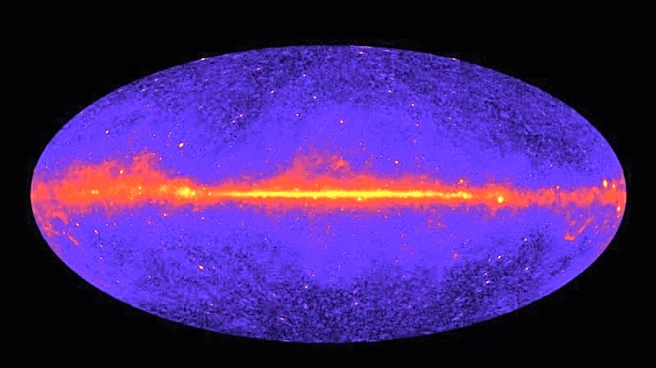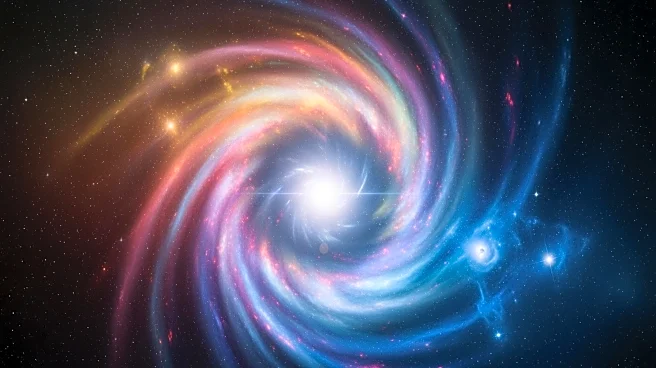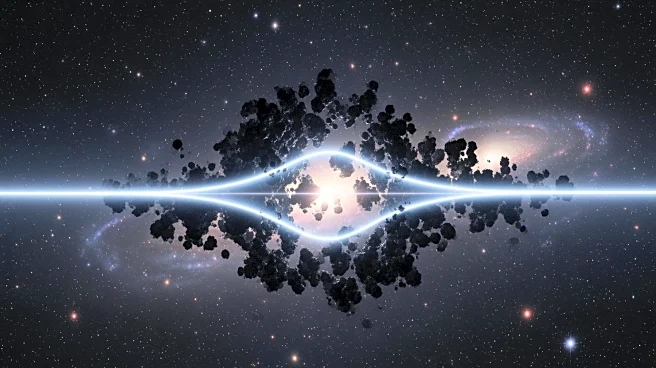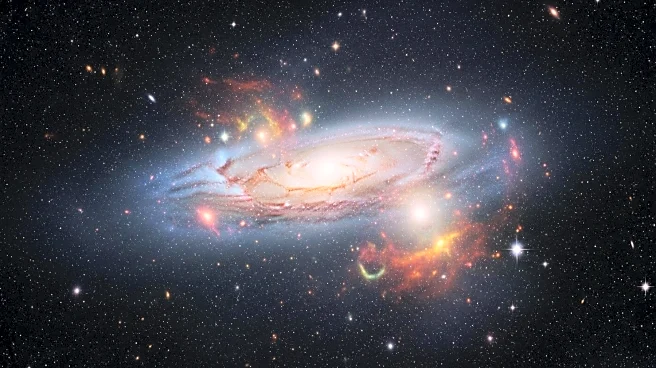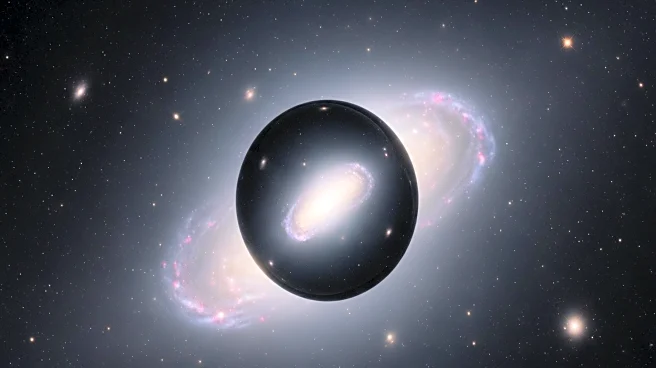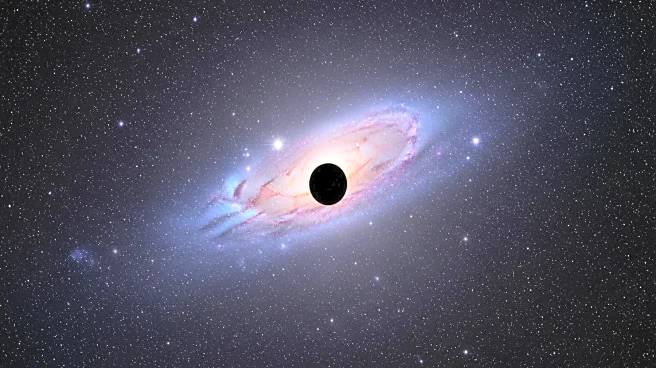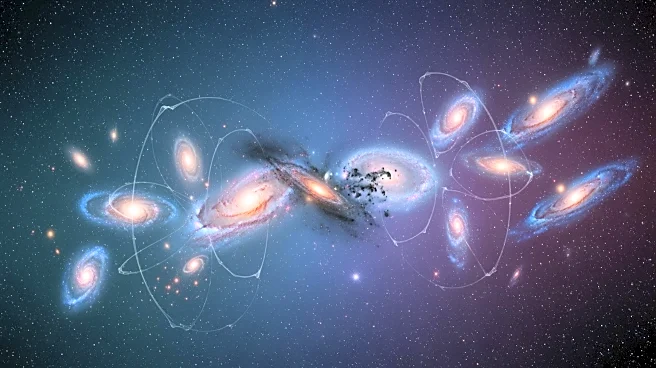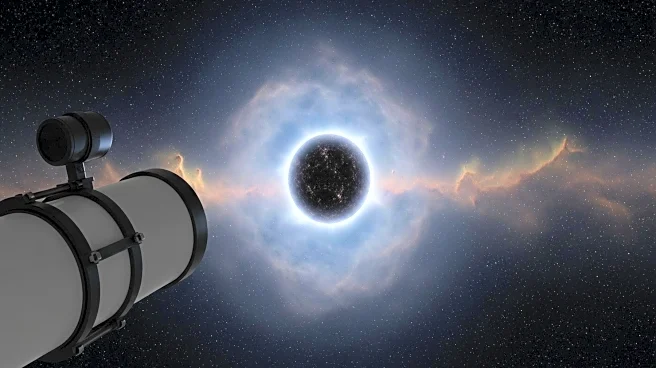What's Happening?
A new study from the University of York proposes that dark matter, which constitutes over 80% of the universe's matter, might leave subtle color fingerprints on light passing through dark-matter-rich regions.
The study suggests that depending on the type of dark matter, light could acquire a faint red or blue tint. This effect, while currently undetectable, could be measured with future ultra-sensitive telescopes. The research explores the possibility of indirect interactions between dark matter and light through intermediate particles, potentially leaving a detectable signature on cosmic light.
Why It's Important?
The study offers a novel approach to understanding dark matter, a mysterious substance that does not emit, absorb, or reflect light. If future telescopes can detect these color shifts, it could provide a new method for studying dark matter and distinguishing between different theoretical models. This could significantly advance the field of cosmology by offering insights into the composition and behavior of dark matter, which remains one of the universe's greatest mysteries.
What's Next?
Future observatories with enhanced spectral and polarization sensitivity, such as the European Extremely Large Telescope and NASA's Nancy Grace Roman Space Telescope, may test these predictions. Detecting the subtle color shifts would require precise instruments and detailed analysis of light from distant cosmic objects. If successful, this approach could open a new observational window on dark matter, aiding in the development of more accurate models and potentially leading to breakthroughs in understanding the universe's fundamental components.
Beyond the Headlines
The concept of dark matter leaving color fingerprints on light challenges the traditional view of dark matter as completely non-interactive with electromagnetic radiation. This could lead to a reevaluation of dark matter's properties and its role in cosmic phenomena. The study also highlights the importance of interdisciplinary research, combining theoretical physics with advanced observational techniques to explore the universe's hidden aspects.


